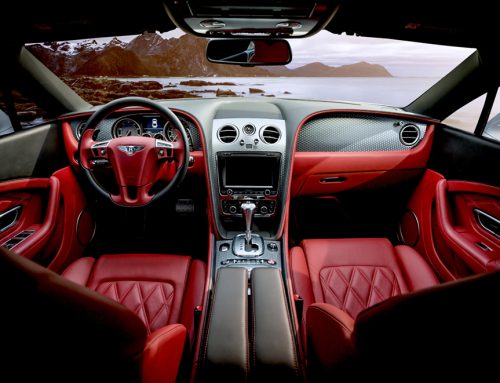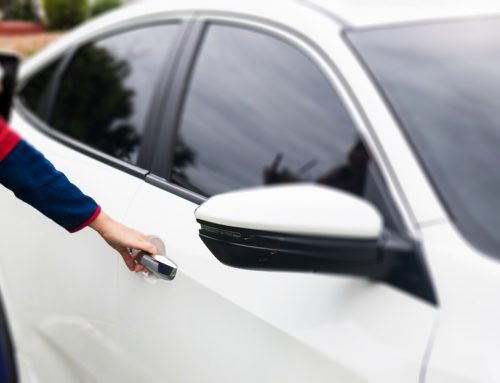What the Heck Is that Black Soot on My Wheels?
Have you ever noticed black flecks on your wheels? Your might have brake dust. This minor nuisance is most common on the wheels of your vehicle, especially after normal road use.
The bad news: Brake dust can make your wheels a bit unsightly.
The good news: Your brakes are probably just fine. The accumulation of brake dust is a normal occurrence present on all models of vehicles regardless of the manufacturer. Brake dust is not a sign of failing brakes. It’s simply the result of different materials being used on today’s brake pads and rotors.
More bad news: As the wheels spin and brakes are applied, the brake dust will be baked on the finish of your aluminum wheels due to excessive heat. This causes streaks, unsightly marks, discoloration and possibly damage to the wheel’s finish.
Even worse news: That’s because there is the real possibility that brake dust will become corrosive. It’ll depend on which chemicals went into the make-up of your brake pads, but if the dust has a chance to corrode the aluminum in your wheels, the damage can be permanent.
So, if you are intrigued, let’s first answer the question “what exactly is brake dust?”
Basically, brake dust is made up of iron particles and is caused by the grinding of the cast iron brake rotor by the brake pads. Additionally, brake dust contains some of metallic elements of the brake pad and carbon residue, which also comes from the brake pad. Since you drive presumably every day, more brake dust is always being made.
Could brake dust actually destroy my alloy wheels?
Brake dust contains a combination of various materials – metal filings, carbon fibers and adhesive residues. None of these are good for your alloy wheels. When left untreated, brake dust will wreak havoc on the finish of most alloy wheels, making it extremely hard to remove. In fact, the adhesive compounds are one of the most damaging and could cause galvanic corrosion if they are left to set in.
You can stop this damage in its tracks.
Here is some advice from alloy wheel specialists:
Retrofit with low dust brake pads. One option is to install ceramic brake pads. Since their introduction in the mid-1980s, these pads have increased in popularity since they are especially quiet and tend to produce less dust over time. Even so, the dust they produce is light colored, so you don’t see it. Moreover, since there is no metal content, the dust is non-corrosive and will not damage the finish on your wheels.
The drawback: Primarily, their cost: due to higher manufacturing costs, ceramic brake pads tend to be the most expensive of all types of brake pad. Plus, ceramic brake pads aren’t considered the best choice for extreme driving conditions, such as very cold climates.
Install high quality pads.
On the other hand, you should always install high quality brake pads. Cheap and substandard pads use inferior friction materials that produce a lot of dust. They are also prone to grinding noises. Always insist on high quality or OEM brake pads for replacement. These pads are manufactured under the highest quality standards and use top notch friction-inducing materials that provide more stopping power with a reduced amount brake dust. You will immediately notice the difference in the amount of dust, not to mention the increased stopping power and quiet operation of your braking system.
Install dust shields.
This commercially available accessory is inexpensive insurance against the accumulation of brake dust on your alloy wheels. They act as a brake dust repellent and are usually consist of aluminum placed between your wheels and brake rotors. If you do use them, remember to purchase a set with vented dust shields, to assist in braking cooling and efficiency.
Caution: Some auto pros don’t think it’s a good idea to install dust shields, even if they’re vented. They simply believe that these shields mess with the airflow around the brakes, and possibly overheating your braking system.
Check with your auto expert for details.
Have brakes inspected regularly.
Periodic maintenance of your braking system will help determine the cause of excessive dust, as rough rotors and misaligned calipers or pads will result in excess friction, thus an increase in brake dust.
Have the braking system checked routinely and adjusted in accordance to manufacturer’s specs every time the vehicle is serviced.
Establish a good wheel cleaning routine.
Remember, clean wheels are a lot like a clean pair of shoes. Just like polished shoes finish off an outfit, clean wheels finish off a clean vehicle. Let’s take a look at how to properly clean them so the shoes of your vehicle
The good news here is that you don’t have to spend a lot of money cleaning your vehicle’s wheels, but you do have to put in a bit of elbow grease. For the purposes of this blog, we will look at the most straightforward method to help bring the shine back to your wheels.
Caution: Residue from brake dust can cause skin irritation when touched, or even respiratory problems if inhaled. So, you need to take extra precautions such as wearing rubber gloves and protective goggles.
To clean brake dust the conventional way, simply follow these steps.
Note: Most car enthusiasts are wary of the fact that alloy wheels must be allowed to cool prior to cleaning.
- Always begin with a dry wheel.
- Clear any accumulated brake dust from the wheel with a soft nylon brush. Make sure the brush gets into all of the small, recessed areas of the wheel.
- Spray the wheels with a high-pressure hose with cold water. Make sure, however, that the pressure is not overly strong to avoid damaging the wheel finish or risking a tire puncture from brake dust.
- Using mild soapy water, gently scour the tire surface to remove any remaining brake dust. You might even use the multi-purpose toothbrush to get to the spokes or hard-to-reach areas.
- Clear out the brake dust by rinsing any soap and water from the wheel. Pay special attention to the lug nuts. Make sure to drain the rinse to avoid any acidic substance from forming a corrosive substance.
- Repeat the same steps for each wheel.
If washing your wheels with soap and water doesn’t do the trick, it’s probably time to step up your game and get a bit more aggressive with a store-bought wheel cleaner.
Are store-bought cleaners safe for my wheels?
Many commercial cleaning products are available from an auto supply store. Most of these can get rid of baked-on brake dust. The key to choosing the right wheel cleaner is to know what type wheels on your vehicle. Most modern alloy wheels are clear-coated but older wheels might be anodized or polished. An acidic wheel cleaner may work on a bare uncoated wheel but will most likely eat off the clear coat. Your best bet: Use a product advertised as “clearcoat safe” if unsure of what type coating is on your wheels. Always check the cleaner in an out-of-the-way spot to assure it’s safe to use.
Make sure to follow the package instructions before using commercial wheel cleaning products.
Should I wax my wheels?
Absolutely! Once you’ve cleaned your wheels, a layer of carnuba wax can help protect the shine. It also gives the brake dust a nice place to settle in to, so they next time you wash the wheels, the dust should release much easier.
For particularly baked-on or caked-in brake dust, you might consider taking your vehicle to a professional auto detailing service. They have the necessary equipment and cleaning tools, including a clay bar, essential not only to thoroughly rid of the brake dust, but also restore your wheels and rims to their original shine.
Simply call the professionals at DoubleTake Auto for complete details on cleaning your wheels.






